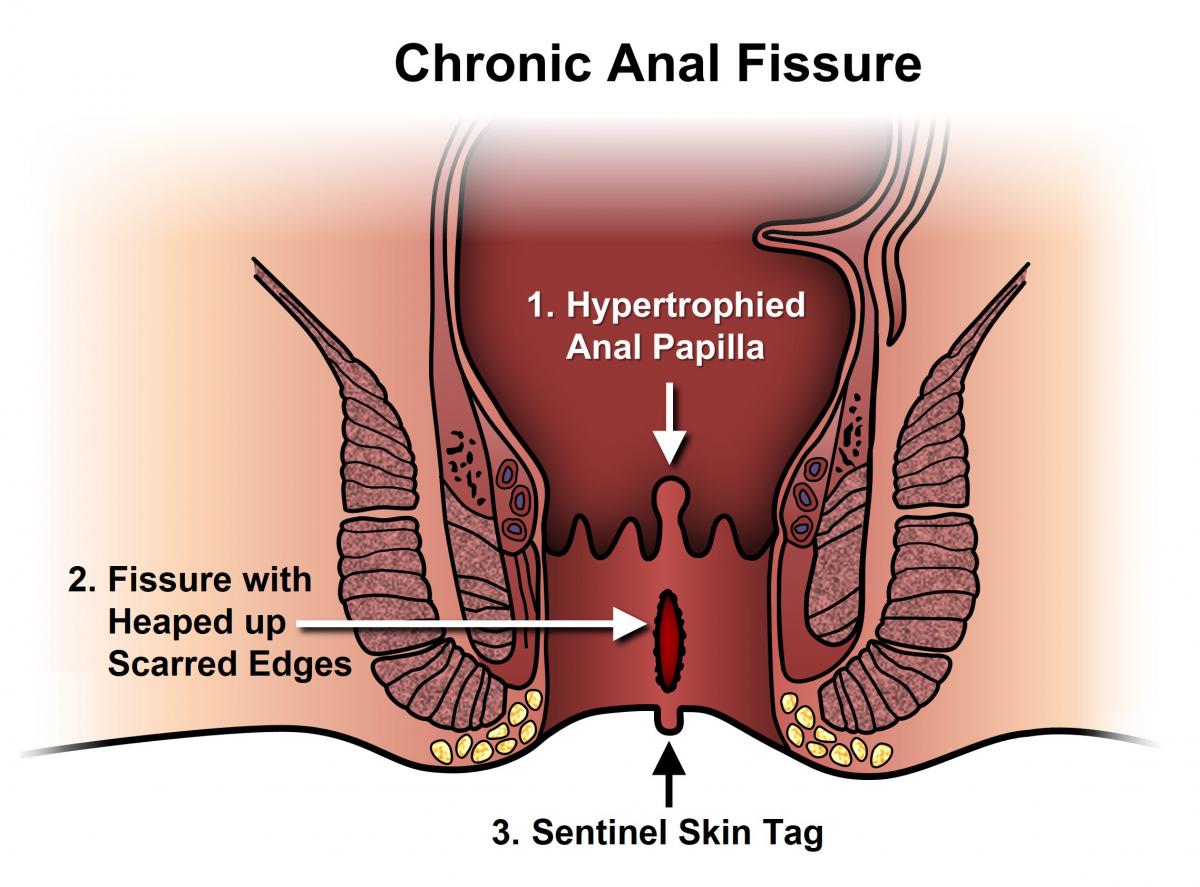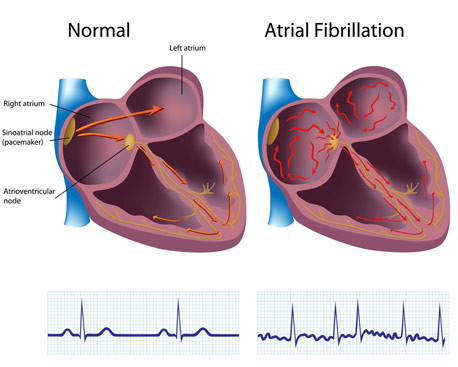Diltigesic Organogel, Diltiazem
- Introduction to Diltigesic Organogel
- Composition and Properties of Diltigesic Organogel
- How Diltigesic Organogel Works
- Indications and Uses of Diltigesic Organogel
- Off-Label Uses of Diltiazem
- Dosage and Administration Guidelines
- Side Effects and Adverse Reactions
- Important Precautions and Warnings
- Specific Considerations for Diverse Populations
- Interactions with Other Medications
- Overdose and Emergency Procedures
- Storage and Handling Precautions
- Future Perspectives and Ongoing Research
Introduction to Diltigesic Organogel
Diltigesic Organogel represents an advancement, in pharmaceutical innovation especially in treating chronic anal fissures.
The distinctive gel base of the formulation allows for application directly to the affected area providing a notable benefit compared to treatments that are taken systemically.

Overview of Diltiazem as a Medication
Diltiazem primarily functions as a calcium channel blocker, known for its ability to widen blood vessels thereby lowering blood pressure and enhancing blood circulation. This unique action is essential for treating fissures and helpful, in managing various circulatory conditions.

Brief History of Diltigesic Organogel Development
The creation of Diltigesic Organogel began with a shift in approach moving away from the method of administering diltiazem orally to applying it topically in a specific area.
This specialized gel was designed to address the effects that oral diltiazem can have on the entire body by focusing on providing relief and promoting healing for individuals, with anal fissures.
It aims to offer pain relief and enhance the recovery process without causing the widespread side effects often linked to drugs.
Composition and Properties of Diltigesic Organogel
Active Ingredients
Diltiazem Hydrochloride works as the vasodilator to ease muscle tension and improve blood circulation at the application site.
Pharmacological Properties
The Diltigesic Organogel showcases pharmacological traits mainly linked to its key ingredient, diltiazem hydrochloride. Its ability to widen blood vessels plays a role, in enhancing blood circulation in the impacted region, which speeds up recovery and eases discomfort.
Diltiazem Hydrochloride
This substance is a blocker of calcium channels that specifically focuses on relaxing and widening the smooth muscle, in blood vessels.

Diltiazem CD vs ER
Diltiazem CD (controlled delivery) and Diltiazem ER (extended-release) are two types of formulations created to extend the effects of the drug with variations, in how they release it.
Diltiazem CD slowly releases the drug over a 24 hour period whereas Diltiazem ER keeps a level of the drug in the bloodstream for a longer duration.
Diltiazem vs Metoprolol
Metoprolol is effective in treating heart conditions. It works differently from Diltiazem. Diltiazem helps relax the muscles, in fissures while metoprolol, a beta blocker mainly lowers heart rate and cardiac output.
Is Cartia XT the Same as Diltiazem?
Cartia XT is actually a trademark for diltiazem hydrochloride, in a sustained release form. It works similarly to extended-release brands of diltiazem ER and is used for the same medical purposes.
Is Diltiazem a Diuretic?
Diltiazem does not act as a diuretic; it works by controlling calcium levels in the heart and smooth muscles, which helps widen blood vessels of promoting urine production.
Is Diltiazem a Controlled Substance?
Diltiazem is not considered a controlled substance. While it is subject to regulation for its benefits it does not show the potential, for abuse or dependence commonly seen with controlled substances.
How Diltigesic Organogel Works
Pharmacodynamics of Diltiazem
Diltiazem, the ingredient in Diltigesic Organogel works by regulating calcium ion channels to produce therapeutic effects. Its main function is to block the entry of calcium ions through channels found in heart and muscle tissues.
This blocking action leads to physiological changes;
- Lowering of intracellular calcium levels.
- Reduction in contraction of smooth muscles.
- Decrease in heart rate and blood pressure.
These unique properties of Diltiazem make it effective in treating conditions where reducing muscle tension can help relieve symptoms, such as in the treatment of fissures, with Diltigesic Organogel.
Interaction with Cellular Mechanisms
Diltigesic Organogel works effectively mainly because it acts directly at the application site. When applied Diltiazem interacts with the structures in that specific area. The processes involved include;
- Cell Vasodilation; By blocking calcium entry Diltiazem helps relax the muscle cells, in blood vessels improving blood flow and delivering nutrients to aid in healing anal fissures.

- Muscle spasm reduction; The gel also eases involuntary spasms of the sphincter muscle reducing pain and discomfort linked to anal fissures
. This targeted method not only enhances the drug's healing effects but also limits overall absorption lowering the risk of side effects typically seen with systemic calcium channel blocker administration.
Indications and Uses of Diltigesic Organogel
Primary Use in Treating Anal Fissures
Diltigesic Organogel is mainly used to treat anal fissures a condition characterized by small tears in the anus lining that can lead to discomfort and bleeding. This topical gel provides a surgical option, for easing symptoms and supporting healing in the affected areas.
- Pain Relief; The gel effectively reduces the pain commonly felt when dealing with anal fissures during bowel movements.
- Decreased Bleeding; By improving blood flow the organogel aids in lessening bleeding linked to fissure injuries.
Mechanism of Action for Fissure Healing
- Enhancing blood circulation to the fissure area.
- Alleviating muscle tightness that contributes to pain and discomfort.
Diltiazem for Atrial Fibrillation (Afib)
Diltiazem though not specifically indicated for Diltigesic Organogel is commonly used in the field of cardiology to regulate heart rate in individuals, with atrial fibrillation. Its ability to adjust electrical activity assists in managing fast heartbeats and promoting a steady rhythm.

Diltiazem Extended Release (ER)
The extended-release feature helps patients maintain symptom relief, which is vital for effectively managing heart-related issues, in the long run.
Diltiazem for Tachycardia
When dealing with tachycardia diltiazem is helpful in reducing a heart rate that's faster than normal. By slowing down the entry of calcium, into heart cells it can effectively treat not only atrial fibrillation but also other types of rapid heart rates that start above the ventricles.
Off-Label Uses of Diltiazem
Overview of Common Off-Label Applications
Diltiazem, a versatile calcium channel blocker is often used in ways that go beyond its approved uses demonstrating its flexibility in various medical situations. These off-label applications make use of the drugs ability to widen blood vessels and regulate heart function to address a variety of conditions;
- Migraine Prevention; Diltiazem is employed to lessen the frequency and intensity of attacks by affecting calcium-dependent processes in the brain's blood vessels, which helps stabilize nerve activity and reduce inflammation that triggers migraines.
- Raynaud Phenomenon; In patients with Raynaud's phenomenon diltiazem is used to reduce the frequency and severity of episodes by expanding blood vessels and enhancing blood flow, to extremities.
- Esophageal Spasms; Its capacity to relax muscle contractions is also utilized to relieve the discomfort associated with esophageal spasms offering relief for individuals dealing with this condition.
Although these uses are not explicitly approved by bodies they are supported by extensive clinical experience and documented case studies that illustrate their effectiveness and safety across diverse patient groups.
Research and Evidence Supporting These Uses
Extensive real-world studies support the use of diltiazem for purposes not originally intended, highlighting its benefits in various medical situations. Here are some important discoveries from research;
- Migraine Treatment; A thorough examination featured in the Journal of Headache and Pain revealed that diltiazem effectively reduces the frequency of migraines in individuals with chronic conditions. This positive outcome is linked to its ability to regulate calcium levels within nerve cells.
- Raynauds Phenomenon; Clinical experiments have shown that diltiazem can lessen the severity of Raynauds attacks leading to disruptions in blood circulation and decreased discomfort during episodes.

- Esophageal Spasms; Studies published in the American Journal of Gastroenterology suggest that diltiazem offers relief from cardiac chest pain associated with esophageal spasms resulting in a noticeable reduction in spasmodic occurrences and related symptoms.
While this alternative uses present treatment options involving diltiazem they emphasize the importance of continuous research and rigorous clinical trials to confirm the drugs effectiveness and safety for these specific purposes.
Despite this the existing evidence makes a case, for expanding diltiazems application in managing conditions that are challenging to address using conventional treatments.
Dosage and Administration Guidelines
Recommended Dosages for Different Conditions
The effectiveness of Diltiazem in treating conditions is strongly connected to how it is taken, with the dosage varying based on the specific health issue being treated;
- High blood pressure; The usual oral doses range from 180 to 360 mg daily taken either in divided doses or as extended-release tablets.
- Chronic Stable Angina; Patients might receive doses between 120 to 360 mg per day customized to alleviate symptoms of angina pectoris.
- Atrial Fibrillation; To control heart rate dosages can be increased up to 360 mg daily depending on how the patient responds and tolerates the medication.
It's essential to adhere to the dosing instructions given by healthcare providers, for optimal treatment results and risk reduction.
Methods of Application
Diltiazem comes in types such as oral tablets, extended-release capsules and topical gels each tailored to specific treatment requirements;
- Oral Intake; Its recommended to swallow tablets and capsules whole without crushing or chewing them to ensure they work effectively.
- Topical Use; Products like Diltigesic Organogel are applied directly onto the area, for localized effects while minimizing overall exposure.
Side Effects and Adverse Reactions
Common Side Effects
Diltiazem is usually well received although it may lead to common side effects that tend to get better as the body gets used to the medication; .
- Dizziness, which are often temporary.
- Digestive issues like nausea and constipation.
- Edema, in the ankles and feet.

Serious Adverse Reactions to Monitor
Although the majority of patients may encounter minor side effects there are certain severe adverse responses that necessitate prompt medical intervention;
- Heart related issues; Such, as a slow heart rate or significant low blood pressure.
- Severe skin reactions; Like Stevens-Johnson syndrome and dermatitis.
- Liver problems; Shown by increased liver enzyme levels and yellowing of the skin.
Understanding the Implications of Common Concerns
- The serious side effects to watch out for include heart related issues, severe low blood pressure and dangerous skin conditions.
- Although many side effects tend to fade with time if you notice any persistent or worsening symptoms it's best to consult a healthcare professional.
- Hair loss is a potential side effect that could be related to changes in how your body processes substances or responds to stress brought on by the medication.
- Weight gain may occur in some patients due to retaining fluids caused by the medication.
- Diltiazem commonly lowers heart rate; regular monitoring is crucial for patients with existing heart conditions.
- Stopping diltiazem suddenly can trigger blood pressure or chest pain.
- Its recommended to reduce the dosage, under medical supervision to prevent these risks.
Important Precautions and Warnings
Contraindications for Use
Diltiazem should be avoided in situations where its effects could worsen existing conditions or cause serious side effects. Some important reasons to avoid using it include;
- Advanced Aortic Stenosis; This could increase the risk of heart oxygen imbalance.
- Known Allergies; Patients who have shown allergies to diltiazem or its components should steer clear of this medication.
- Mixing with Specific Medications; Combining it with drugs, like Ritonavir or certain antifungal agents may result in interactions.
Special Precautions for Specific Populations
For some people diltiazem can be helpful but it's important to be careful with groups to minimize risks and get the best results;
- Patients with heart conduction issues should be cautious because diltiazem could make their existing abnormalities worse.
- People, with kidney or liver problems may process and remove diltiazem differently so they might need dosage changes and closer supervision.
Specific Considerations for Diverse Populations
Administration to the Elderly
Elderly individuals tend to react strongly to drugs such as diltiazem leading to a higher chance of experiencing side effects like slow heart rate and low blood pressure. It's crucial, to;
- Begin therapy with doses.
- Keep a close eye out for any signs of excessive slowing of the heart.
- Modify the dosage according to how well it is tolerated and the patients clinical improvement.
Use During Pregnancy and Lactation
Expectant and breastfeeding mothers are advised to consider using diltiazem when the advantages outweigh any potential harm to the baby. Research indicates;
- During Pregnancy; Findings from animal trials indicate negative impacts yet there is insufficient data, on pregnant women.
- While Breastfeeding; Diltiazem is detected in breast milk posing a risk of affecting a nursing infant. Hence a thorough evaluation of the pros and cons is crucial.

Considerations for Pediatric Use
The safety and effectiveness of diltiazem in children have not been proven. If needed it should be used carefully with monitoring and adjustments, to the dosage depending on how the patient responds and the side effects experienced.
Interactions with Other Medications
Common Drug Interactions
Diltiazem is broken down by the liver. Can interact with a variety of medications possibly changing how they work. Some important interactions to note are;
- When beta blockers and digoxin are taken together they can have an impact on heart conduction so its important to monitor heart rate and rhythm closely.
- Certain statins share the metabolic pathway as diltiazem, which could result in higher levels of statins in the bloodstream and potentially increase the risk of myopathy.
- Combining diltiazem with blood pressure medications can boost their hypotensive effects so adjustments, in dosage may be needed to prevent excessive lowering of blood pressure.
Impact on Other Treatments
The presence of diltiazem in the body can influence how well and how well other treatments are tolerated. It's crucial for healthcare providers to know all the medications a patient is using to manage any interactions effectively. Here are some specific effects;
- Increased Sedative Effects; When combined with medications that have properties, like benzodiazepines or opioids diltiazem might boost their sedative effects.
- Changes, in Drug Absorption and Metabolism; Diltiazem could disrupt the way other drugs are metabolized, resulting in either increased toxicity or reduced effectiveness.
Diltiazem Interactions
The impact of diltiazem, on treatments, including those related to the heart is broad. Its main function involves blocking the P450 enzyme system, specifically CYP3A4 which plays a vital role in metabolizing numerous medications.
Diltiazem and Alcohol
Drinking alcohol while taking diltiazem can boost its ability to lower blood pressure possibly causing dizziness, headaches and potential heart issues. It's important to be careful, about alcohol intake when undergoing treatment.
Diltiazem and Caffeine
Moderate consumption of caffeine usually does not have an impact, on diltiazem but higher amounts may diminish the drugs effectiveness in regulating heart rate and blood pressure.
Diltiazem and Bananas
Bananas, which are high in potassium typically do not directly interact with diltiazem. Nevertheless individuals should keep an eye on their potassium levels if they are taking medications that affect potassium in addition, to diltiazem.
Diltiazem and Grapefruit
Eating grapefruit or drinking grapefruit juice can greatly raise the levels of diltiazem in your blood by slowing down its breakdown. This can cause a chance of experiencing severe side effects, like low blood pressure and slow heart rate.
Overdose and Emergency Procedures
Symptoms of Overdosage
Taking much diltiazem can show up as a mix of serious symptoms showing how it affects blood vessels and the heart. These symptoms consist of;
- low blood pressure and slow heart rate, which could progress to shock.
- Changes in mental awareness from confusion, to deep unconsciousness or coma.
- Heart rhythm problems that could be life threatening.
Immediate Actions and Antidote Information
In case of a diltiazem intake it is vital to seek immediate medical assistance. Here are the necessary steps to follow;
1. Contact emergency services; It is crucial to get medical help right away.
2. Stabilization; Pay attention to managing the airway, breathing and circulation.
3. Antidote administration; Intravenous calcium salts can be given as a remedy to counteract the impact of calcium channel blockade.
Additionally consider lavage and giving activated charcoal within a few hours after ingestion to lower drug absorption.
Storage and Handling Precautions
Proper Storage Conditions
To ensure that diltiazem remains effective and safe it is crucial to follow the storage guidelines;
- Store at room temperature in a dry and cool place.
- Keep the medication in its packaging until you are ready to take it.
- Prevent exposure, to direct sunlight or extreme cold temperatures.
Safety Measures for Handling
When using diltiazem it's important to follow some safety guidelines;
- Always handle the medication, with clean dry hands.
- After each use make sure to fasten the cap to avoid contamination.
- Avoid using the medication once it has expired as it may not work as effectively or safely.
Future Perspectives and Ongoing Research
Emerging Studies on Diltiazem
Recent studies on diltiazem are delving into its applications, in different medical scenarios beyond its current uses. Some key areas being looked into include;
- Utilizing it in treatments especially in addressing cerebral vasospasm post subarachnoid hemorrhage.
- Researching its inflammatory characteristics and how they could be applied in treating autoimmune conditions.
Potential New Indications and Formulations
Ongoing studies and advancements are expected to open up possibilities for medical applications and versions of diltiazem. Some potential progressions are;
- Skin-based applications; For addressing skin issues related to blood vessel dysfunction.
- Prolonged release injections; Offering a steady dosage regimen, for individuals dealing with long term heart conditions.
These new developments not only aim to enrich the medical field but also seek to enhance patient results by offering personalized and easier treatment choices.




















